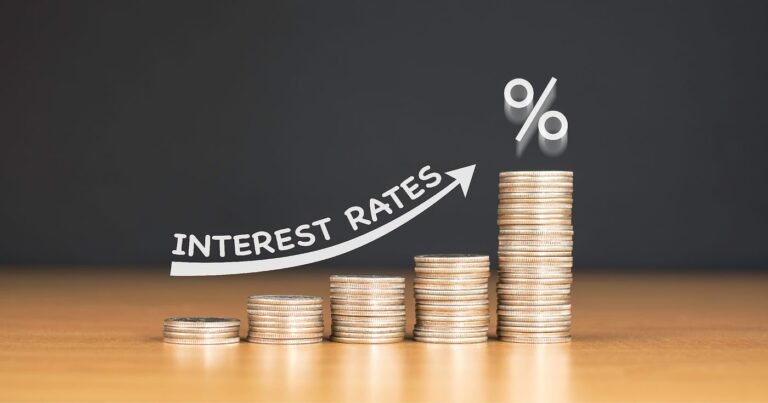Introduction: The Global Automotive Industry Under Pressure
In today’s interconnected economy, the automotive industry relies heavily on international trade. Tariffs—taxes on imported goods—are often used by governments to protect domestic industries or address trade imbalances. However, when applied to the automotive sector, these tariffs can have far-reaching implications for manufacturers, consumers, and the broader economy.
This article dives into the potential effects of tariffs on car prices, the factors driving these changes, and how different stakeholders in the automotive market are adapting to this shifting landscape.
The Basics of Tariffs and Their Role in Trade Policy
At their core, tariffs serve as a tool for governments to regulate imports. By increasing the cost of imported goods, tariffs aim to encourage domestic production and consumption. In the automotive sector, this can translate to increased costs for vehicles, parts, and raw materials sourced from other countries.
- Primary Objectives of Tariffs:
- Protect domestic manufacturers from foreign competition.
- Reduce trade deficits by curbing imports.
- Generate government revenue.
While tariffs might benefit domestic producers in the short term, they often lead to unintended consequences, particularly for consumers and businesses reliant on global supply chains.
How Tariffs Directly Affect Car Prices
When tariffs are imposed on imported vehicles or automotive components, manufacturers face higher production costs. These increased expenses are typically passed on to consumers in the form of higher car prices.
- Impact on Imported Vehicles:
- Cars imported from countries facing tariffs become significantly more expensive.
- For consumers seeking foreign brands, this results in fewer affordable options.
- Increased Costs for Domestic Manufacturers:
- Even domestic automakers rely on imported parts and materials, such as steel and electronics.
- Tariffs on these imports drive up production costs, leading to higher prices for locally manufactured cars.
- Effect on Used Car Markets:
- With new cars becoming pricier, demand for used vehicles may surge, increasing their prices as well.
Global Supply Chains and Their Vulnerability to Tariffs
Modern vehicles are products of highly integrated global supply chains. A single car might include parts from multiple countries, assembled in a completely different region. Tariffs disrupt this delicate balance:
- Costly Reconfigurations:
- Manufacturers may need to adjust supply chains to minimize tariff exposure, adding logistical complexities and expenses.
- Delays in Production:
- Import restrictions can lead to bottlenecks, slowing down production timelines and affecting inventory availability.
- Long-Term Strategic Shifts:
- To avoid future disruptions, some companies may relocate production facilities closer to their primary markets, but such changes take years to implement.
Consumer Behavior Amid Rising Car Prices
As car prices rise due to tariffs, consumer purchasing patterns are likely to shift:
- Preference for Budget-Friendly Options:
- Buyers may opt for smaller, fuel-efficient models that cost less upfront.
- Entry-level vehicles from domestic manufacturers could see a spike in demand.
- Increased Financing and Leasing:
- Higher prices push consumers toward extended loan terms or leasing agreements to manage affordability.
- Delayed Purchases:
- Many buyers may postpone upgrading their vehicles, waiting for prices to stabilize.
- Exploration of Alternatives:
- Rising costs might encourage a shift toward public transportation or car-sharing services, particularly in urban areas.
Automakers’ Responses to Tariff Pressures
The automotive industry has a history of adapting to economic challenges, and tariffs are no exception. Automakers are employing various strategies to mitigate the impact of tariffs on their operations:
- Shifting Production Locations:
- Some companies are relocating factories to tariff-free zones or closer to key markets.
- For example, a U.S.-based automaker might expand facilities domestically or in neighboring countries with favorable trade agreements.
- Negotiating Trade Agreements:
- Automakers are lobbying governments to establish or revise trade deals that reduce tariff burdens.
- Streamlining Operations:
- Companies are focusing on leaner production processes, reducing waste, and cutting costs wherever possible.
- Introducing New Pricing Models:
- To maintain customer loyalty, some manufacturers are offering incentives, rebates, or flexible financing options.
Economic and Political Implications of Tariffs on Cars
The effects of automotive tariffs extend beyond manufacturers and consumers, influencing broader economic and political landscapes:
- Impact on Employment:
- Domestic factories may benefit from increased demand for local production, potentially creating jobs.
- Conversely, higher production costs could lead to downsizing in some areas.
- Strained Trade Relations:
- Countries targeted by tariffs often retaliate, imposing their own import taxes, which can escalate into trade wars.
- Inflationary Pressures:
- As car prices rise, the overall cost of living increases, particularly in regions where vehicle ownership is essential.
- Shifts in Global Competitiveness:
- Countries with fewer trade restrictions may become more attractive for automotive investments, altering the industry’s global dynamics.
The Role of Electric Vehicles in Mitigating Tariff Effects
The growing popularity of electric vehicles (EVs) presents an interesting dimension in the tariff debate:
- Reduced Dependence on Imports:
- EVs have fewer mechanical parts than traditional internal combustion engine vehicles, potentially reducing reliance on imported components.
- Government Incentives:
- Many countries offer subsidies or tax breaks for EV purchases, offsetting price increases caused by tariffs.
- Domestic EV Production:
- Investments in local EV manufacturing could help countries reduce their exposure to trade-related risks.
Strategies for Consumers to Navigate Higher Car Prices
In a tariff-driven market, consumers can take proactive steps to manage the financial impact of rising car prices:
- Research and Compare:
- Thoroughly explore different makes and models to find the best value.
- Look for promotions, end-of-year discounts, or certified pre-owned vehicles.
- Leverage Incentives:
- Take advantage of government programs that provide rebates or tax credits for certain vehicle types.
- Consider Long-Term Ownership:
- Investing in a reliable, fuel-efficient car can save money in the long run.
- Explore Financing Options:
- Work with financial institutions to secure favorable loan terms, minimizing the burden of higher prices.
Conclusion: Preparing for a Transforming Automotive Market
Tariffs on vehicles and auto parts are reshaping the automotive landscape, with far-reaching implications for manufacturers, consumers, and economies. While higher car prices are an inevitable consequence, they also present opportunities for innovation, efficiency, and a reevaluation of trade policies.
For consumers, understanding these dynamics and adapting purchasing strategies is key to navigating this challenging environment. Meanwhile, the automotive industry must continue to innovate and collaborate to thrive in an era of heightened trade barriers.
By staying informed and flexible, both individuals and businesses can weather the challenges of tariffs while seizing opportunities in the evolving global automotive market.





Leave a Comment